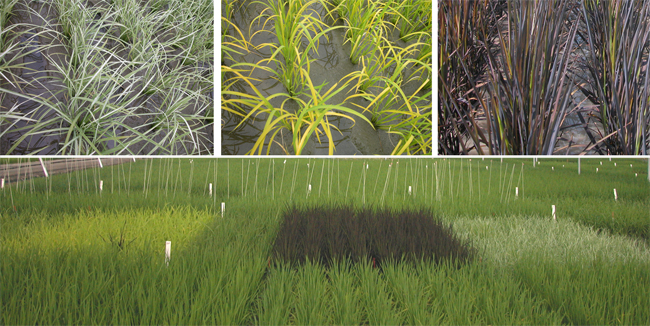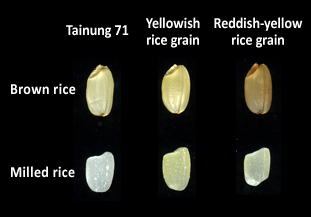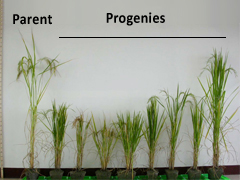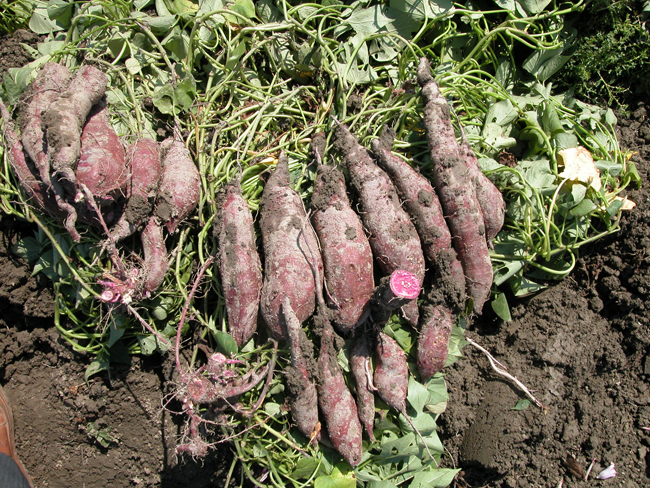Innovative techniques
Sodium azide has proved its worth as a chemical mutagen to induce genetic variability. Thus, this chemical mutagen has become an important tool for the improvement of crop yield and quality. Towards this direction, TARI scientists have successfully created mutation libraries for both Japonica and Indica rice after many years of endeavor with this mutagen. The mutation libraries produced by the treatment of sodium azide allow scientists to develop value-added rice crop varieties with complementary marketing opportunities.
From the aforesaid rice mutation libraries, three lines are selected for their colorful leaves of purple, yellowish and whitish color respectively. These lines add colors to the field and have a potential to contribute to the rural leisure industry. Other sodium azide-induced mutants include: high iron content, high zinc content, low phosphorus content, large-embryo rice with high contents of oryzanol and vitamin E, and black and red rice that contain diverse phenolic compounds and high anti-oxidant activities. These lines can be employed to develop functional rice that is consumed as a staple source of calories as well as health-caring ingredients. Furthermore, the grain amylose content is one of the important traits used to determine the quality and texture of cooked rice. Rice mutants from the rice mutation libraries display a continuous distribution of grain amylose content from negligible amounts to highest amounts of 30%. Among them, TARI scientists have selected a mutant that has high amylopectin content but negligible amylase content. This mutant is ideal for making glutinous oil rice and sticky rice dumpling, two popular cuisines of Taiwan. Some of the mutant plants from the rice mutation libraries are also disease- and pest-resistant, and drought- and/or cold-tolerant. These rice mutants offer additional opportunities to reduce the use of pesticides, assure the safety of farmers and consumers, enhance water use efficiency, adapt to global warming and climate change, and protect the environment while increasing food security at the same time.
On the other side of the coin in regard to rice crop improvement, markers for rice plant characteristics, chemical components, protein content and functional genes have been generated and employed for the detection of loci controlling traits derived from sodium azide-created mutation. They are used to assess the stability and effect of the acquired traits across environments and generations, and to improve mutation techniques and screening methods, thus improving breeding efficiency. The combined techniques have been put into operation for the development of dwarf, lodging-resistant rice lines that maintain high anti-oxidant activities inherited from the parent line. Apart from sodium azide-induced rice mutation libraries, TARI scientists have also used other chemical mutagenesis methods to select high anthocyanin and high yielding sweet potato mutants with high marketing potential. In the future, the scientists will apply chemical mutagenesis in floriculture, fruit and vegetables to create novel varieties.





